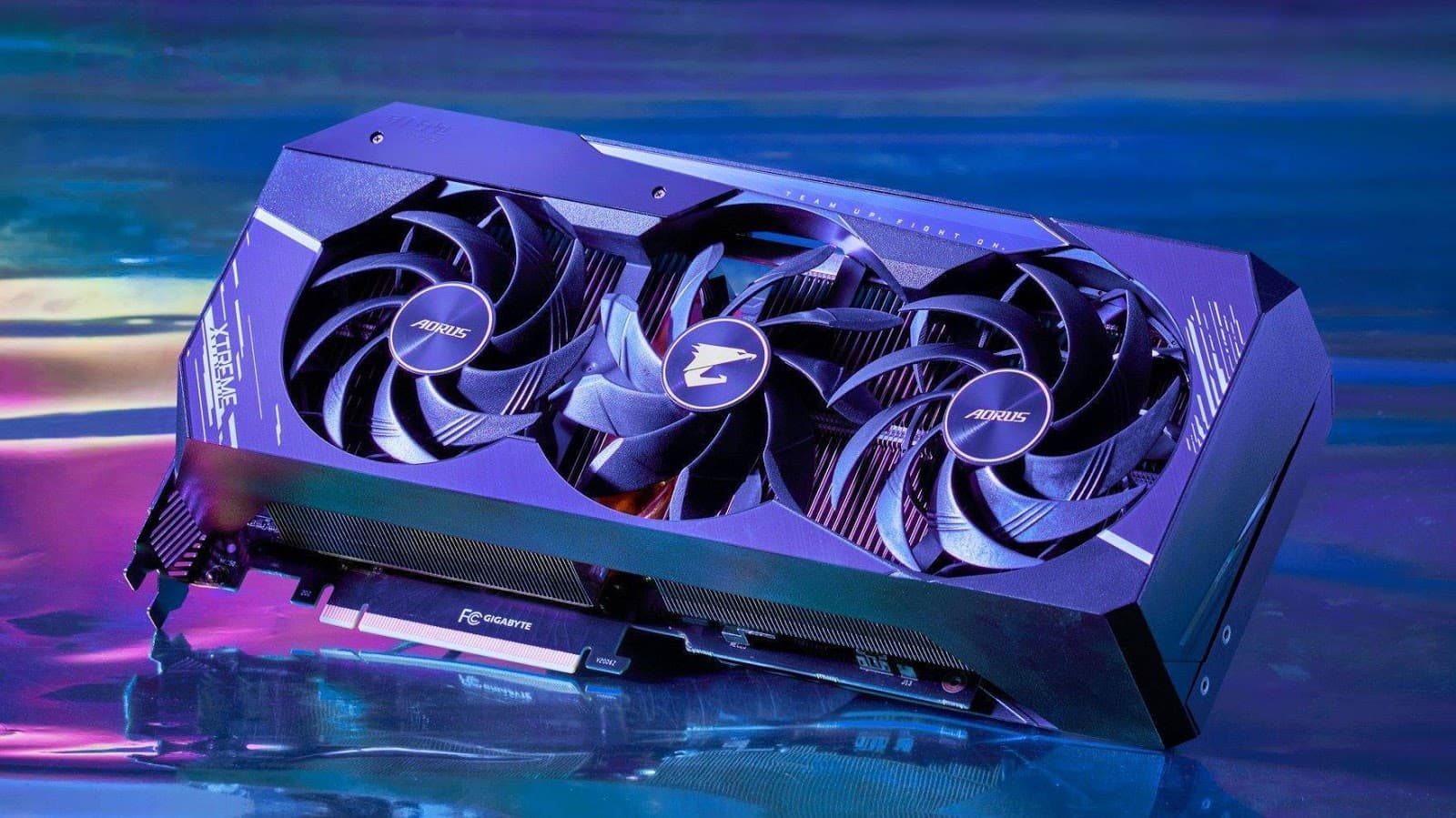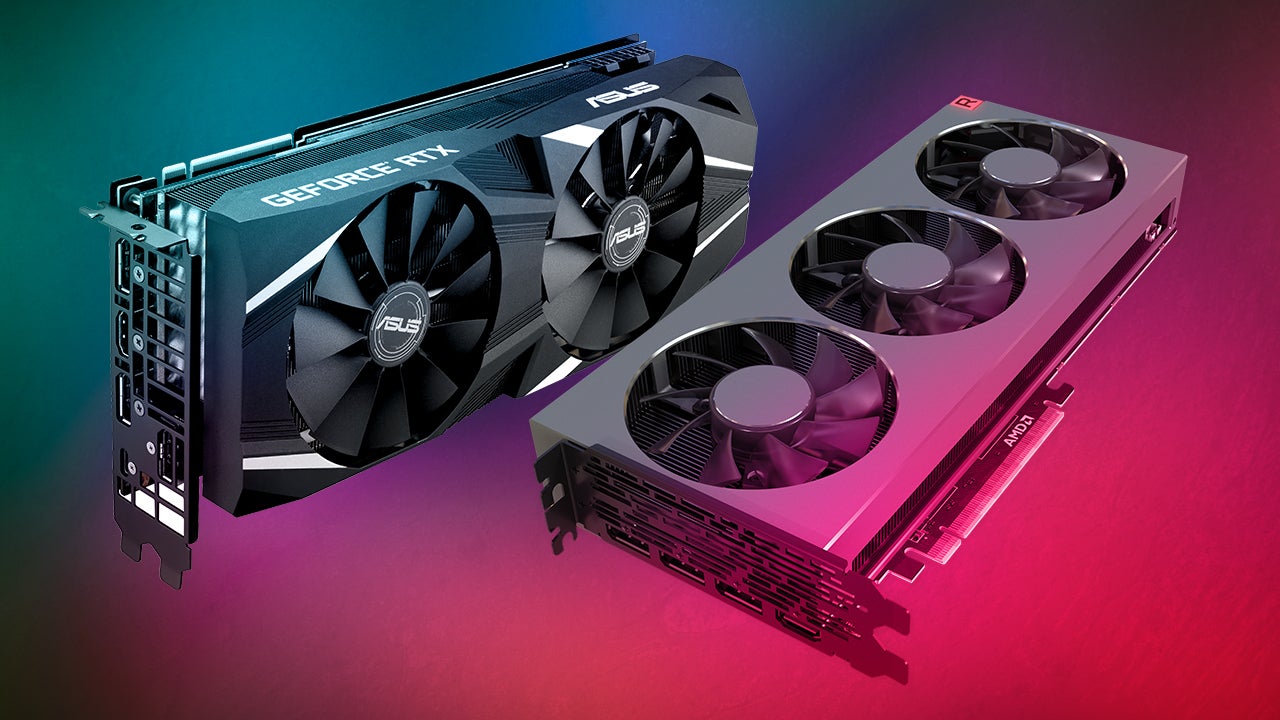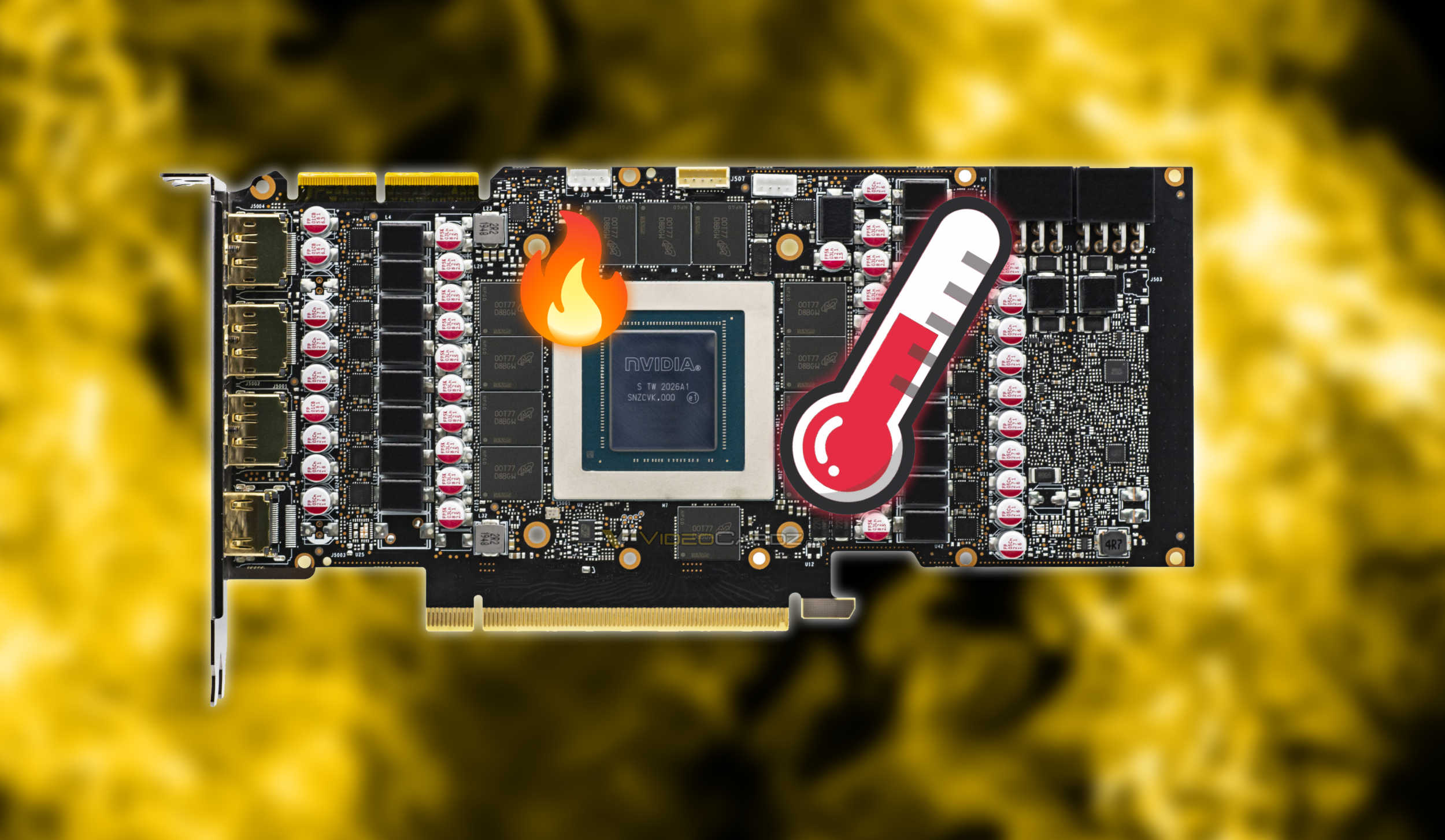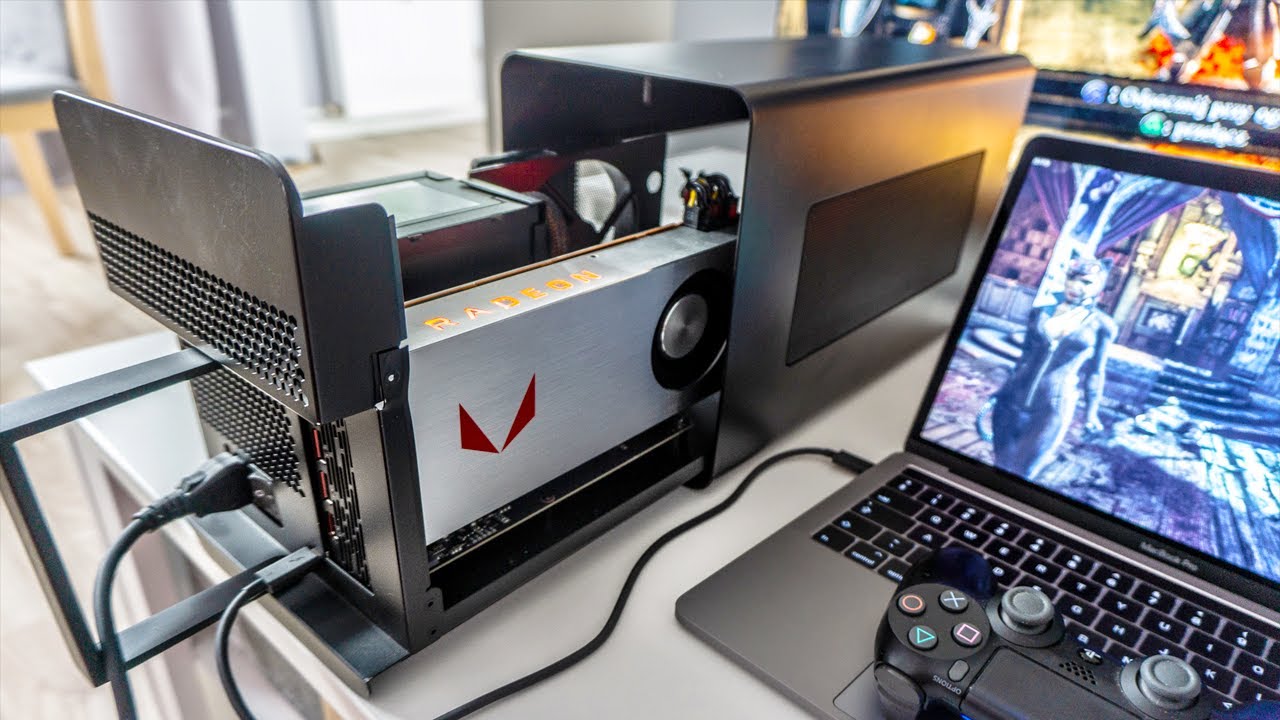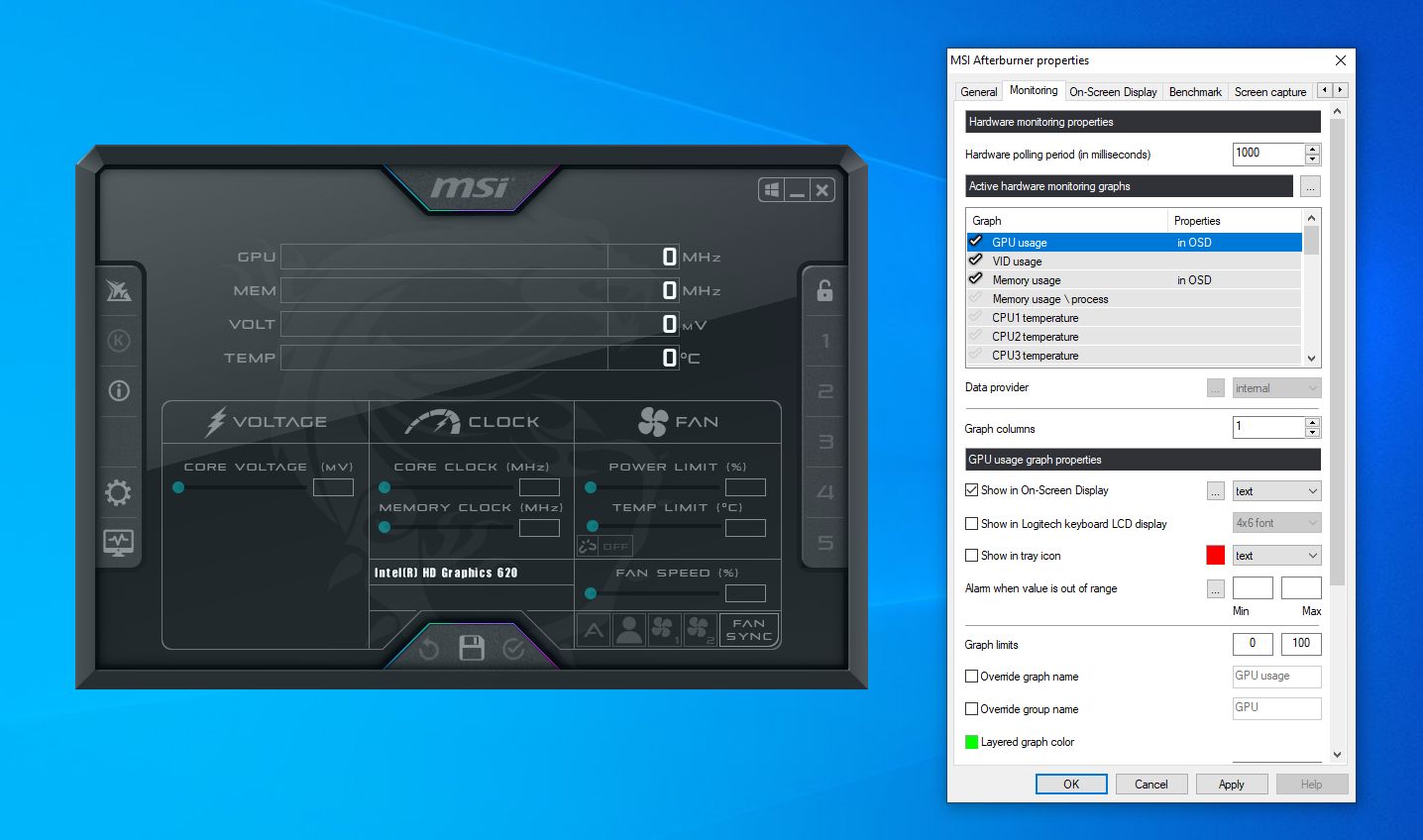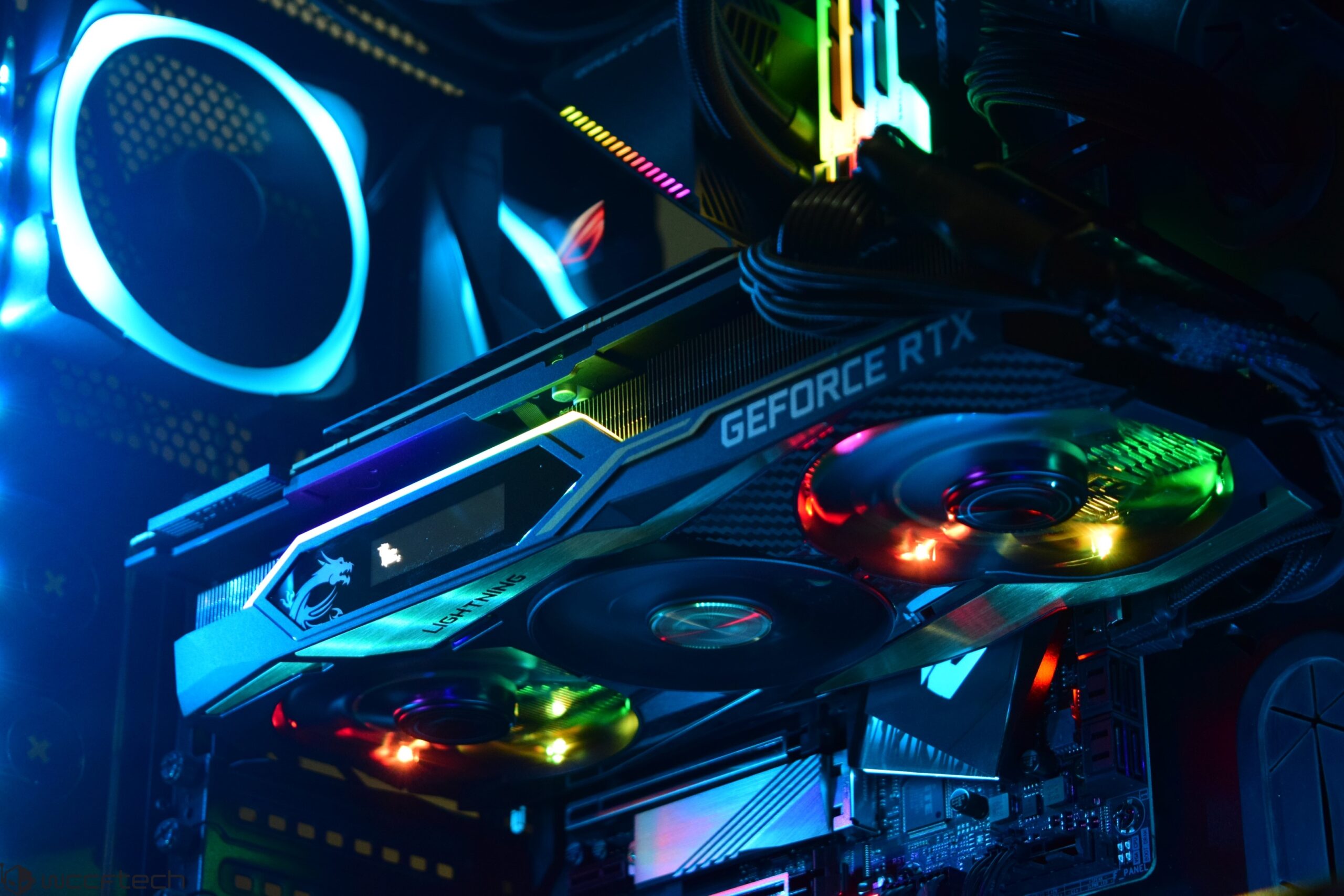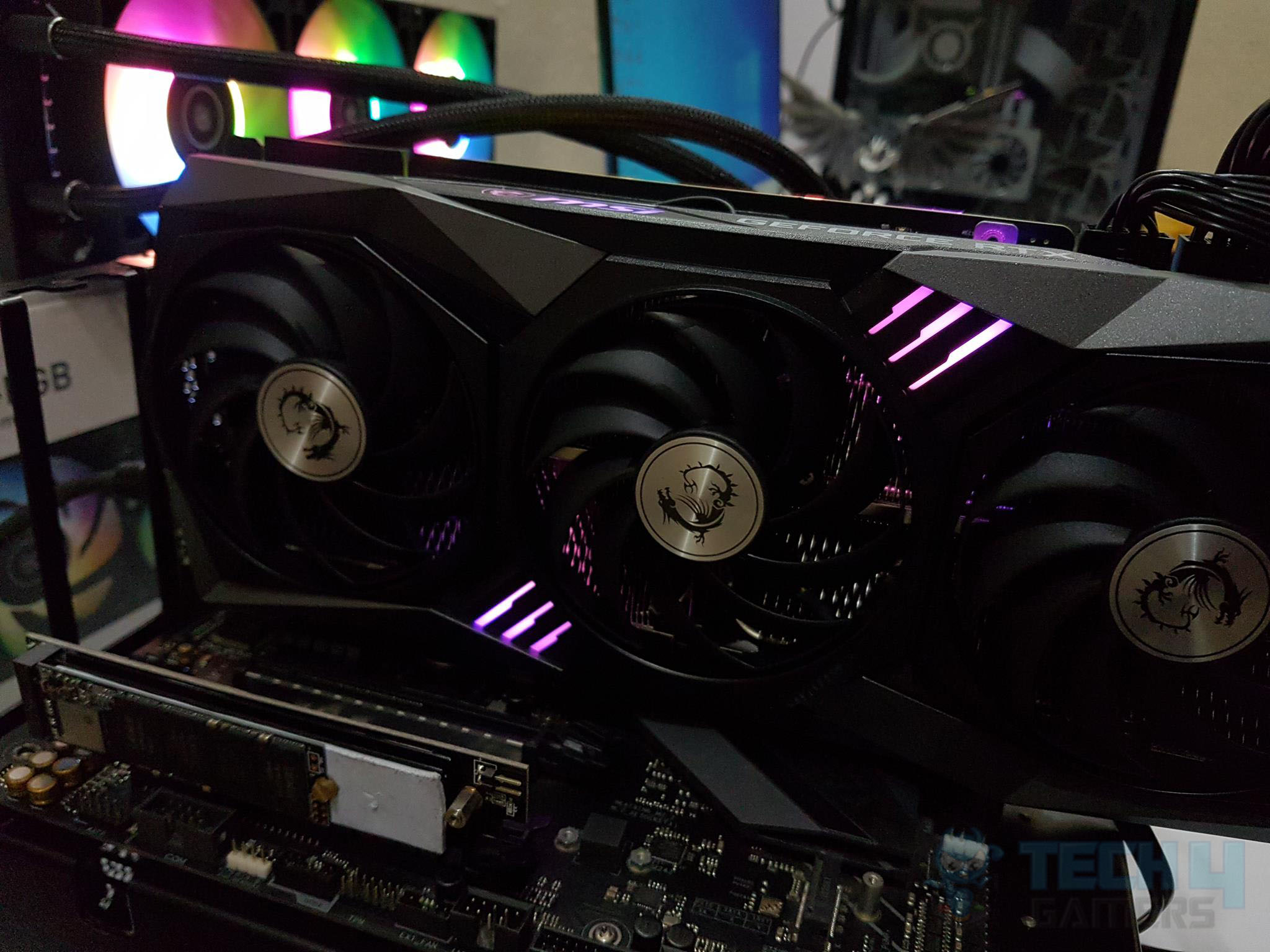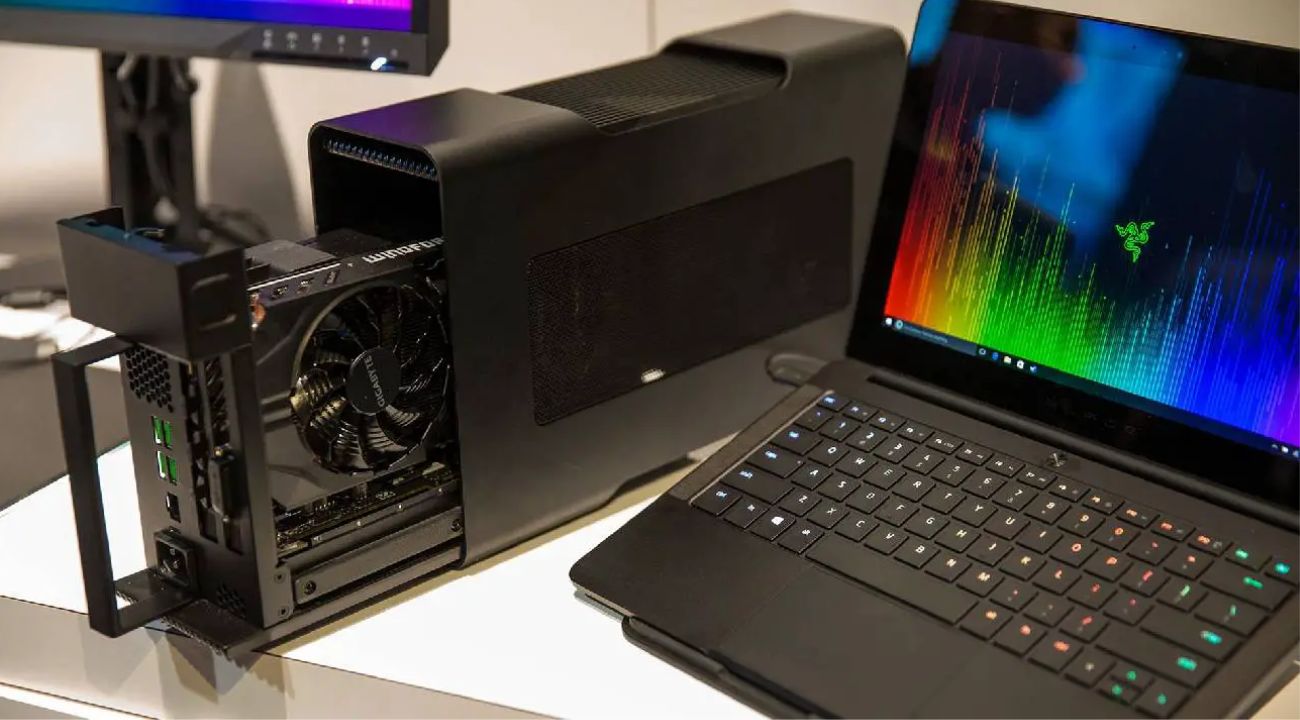What Is A GPU
A Graphics Processing Unit, more commonly known as a GPU, is a specialized electronic circuit that primarily functions to render and manipulate images, animations, and videos. While GPUs are commonly associated with gaming, they have a wide range of applications in various fields such as computer-aided design, scientific simulations, artificial intelligence, and cryptocurrency mining.
The main purpose of a GPU is to accelerate the rendering of graphics by performing complex calculations and computations in parallel. Unlike a Central Processing Unit (CPU) that is designed for general-purpose computing, a GPU is specifically optimized to handle repetitive tasks required for rendering images and processing large amounts of data simultaneously.
How does a GPU achieve this? It is comprised of thousands of smaller processing units, known as shader cores or stream processors, and is built using a parallel architecture that allows for the simultaneous execution of multiple tasks. This parallel processing capability allows the GPU to handle complex graphical calculations and generate realistic visual effects in real-time.
When compared to a CPU, which typically has a smaller number of cores but operates at higher clock speeds, the GPU’s strength lies in its ability to execute numerous smaller tasks in parallel. This makes it highly efficient at handling graphics-intensive workloads, where the simultaneous processing of vast amounts of data is required.
There are different types of GPUs available in the market, ranging from integrated graphics processors found in most consumer-grade computers to dedicated discrete graphics cards used in high-performance systems. These discrete GPUs offer greater processing power and memory bandwidth, making them ideal for demanding applications such as gaming, virtual reality, and professional-grade 3D modeling.
The applications of GPUs extend far beyond gaming and entertainment. They are widely utilized in scientific simulations, weather forecasting, video editing, and image processing, where vast amounts of data need to be processed simultaneously. Additionally, GPUs have become an indispensable tool in the field of machine learning and artificial intelligence, as they are instrumental in training and running complex deep learning models.
The future of GPU technology looks promising. With advancements in manufacturing processes, we can expect to see more powerful and energy-efficient GPUs with increased processing capabilities. This will continue to drive innovation in various industries, powering next-generation gaming experiences, revolutionizing data analysis, and pushing the boundaries of artificial intelligence.
Introduction
As technology continues to advance, so does the demand for more immersive and visually stunning experiences. Whether it’s gaming, virtual reality, or graphic-intensive applications, the need for powerful graphics processing has become indispensable. This is where Graphics Processing Units (GPUs) play a vital role.
At its core, a GPU is a specialized electronic circuit that is designed to handle complex calculations and render graphics with exceptional speed and efficiency. While GPUs are most commonly associated with gaming, their applications extend far beyond the gaming industry.
The purpose of this article is to explore what exactly a GPU is, how it works, and the various types of GPUs available in the market today. Alongside this, we will delve into the wide range of applications that GPUs have, from scientific simulations to artificial intelligence. Furthermore, we will take a glimpse into the future of GPU technology and the potential it holds for transforming our computing experiences.
By the end of this article, you will have a comprehensive understanding of GPUs, their significance, and their impact in different fields of technology.
So, let’s dive in and explore the fascinating world of GPUs!
Purpose of a GPU
The primary purpose of a Graphics Processing Unit (GPU) is to handle the rendering and manipulation of visual data, such as images, animations, and videos. While a CPU is designed for general-purpose computing, a GPU is specifically optimized for graphics-intensive tasks.
One of the key tasks of a GPU is to accelerate the rendering of graphics by performing complex calculations and computations in parallel. GPUs achieve this by utilizing thousands of smaller processing units, known as shader cores or stream processors. These cores work together in parallel, allowing for the simultaneous execution of multiple tasks, resulting in faster and more efficient processing of graphical data.
Why is this parallel processing capability so crucial for GPUs? The answer lies in the nature of graphics rendering, which involves manipulating millions of pixels, applying complex shaders, and calculating lighting and shadow effects. These computations are highly repetitive and can be split into smaller tasks that can be processed simultaneously. GPUs excel at this type of parallel processing, making them ideal for tasks that require real-time rendering and handling large amounts of graphical data.
In addition to gaming, GPUs have become indispensable in various professional fields. For example, in computer-aided design (CAD), GPUs enable engineers and architects to create and manipulate complex 3D models efficiently. In the field of scientific simulations, GPUs are used to accelerate data processing and visualization of complex physical phenomena.
Furthermore, GPUs have found widespread use in artificial intelligence and machine learning applications. Deep learning models, which are responsible for tasks like image and speech recognition, can benefit greatly from the massive parallel processing power of GPUs. GPUs enable rapid training and inference of these models, allowing for faster and more accurate results.
Overall, the purpose of a GPU is to provide accelerated and efficient processing of visual data. Whether it’s delivering stunning graphics in video games, aiding professionals in creating intricate 3D designs, or powering advanced machine learning algorithms, GPUs have become an integral part of modern computing, pushing the boundaries of what is possible.
How Does a GPU Work
Understanding how a Graphics Processing Unit (GPU) works requires a glimpse into its architecture and the processes it undertakes to render and manipulate visual data. At its core, a GPU is composed of thousands of smaller processing units, known as shader cores or stream processors, which work in parallel to execute complex calculations and computations.
When a computer sends a graphical command, such as rendering a 3D object or applying a special effect, the GPU steps in to handle these tasks. The GPU breaks down the computations into smaller, manageable tasks and assigns them to the shader cores. These shader cores work simultaneously to execute their designated tasks, allowing for efficient processing of visual data.
Parallel computing is the key strength of a GPU. Unlike a Central Processing Unit (CPU), which typically houses a small number of powerful cores, a GPU is designed with a much higher number of smaller cores, allowing for a greater number of computations to be performed simultaneously. This parallel architecture enables the GPU to handle the massive amount of calculations required for graphics rendering and data processing without compromising performance.
The GPU communicates with the CPU through a system called the “bus.” The CPU sends data and instructions to the GPU, and the GPU processes them accordingly. The GPU then sends the processed data back to the CPU, allowing it to be displayed on the screen or used for further processing.
Another important component of a GPU is its memory. GPUs have dedicated memory, known as Video Random Access Memory (VRAM), which stores the data needed for rendering and processing graphics. The high-speed and large capacity of VRAM ensure that the GPU can efficiently access the necessary data during the rendering process.
To fully utilize the power of a GPU, developers and software engineers utilize programming languages, such as CUDA or OpenCL, to create code that can run on the GPU’s architecture. These languages allow for parallelized computations, specifically designed to take advantage of the GPU’s capabilities.
In summary, a GPU works by leveraging parallel processing to efficiently handle the complex calculations and computations required for graphics rendering. Its architecture, with thousands of shader cores working in harmony, allows for the simultaneous execution of tasks. This parallelism, combined with dedicated memory and efficient communication with the CPU, enables the GPU to deliver outstanding performance in graphics rendering and data processing applications.
GPU vs CPU
When it comes to processing power, Graphics Processing Units (GPUs) and Central Processing Units (CPUs) have distinct characteristics that make them suitable for different types of tasks. While both GPUs and CPUs are essential components of modern computing, they differ in terms of architecture, design, and the types of computations they excel at.
CPUs are general-purpose processors that are designed to handle a wide range of tasks and instructions. They typically have a fewer number of cores, often in the range of 2 to 12 cores, which are optimized for sequential processing. CPUs are responsible for executing instructions from the operating system and running applications, making them critical for overall system performance and responsiveness.
On the other hand, GPUs are specialized processors that primarily focus on parallel processing and handling graphics-intensive workloads. GPUs are equipped with a larger number of cores, ranging from hundreds to thousands, allowing for a massive amount of computations to be executed simultaneously. This parallel architecture makes GPUs highly efficient for tasks that involve rendering images, videos, and performing complex calculations, such as those used in 3D modeling, scientific simulations, and machine learning.
While CPUs excel at handling single-threaded tasks that require fast execution and immediate response, GPUs are optimized for high-performance parallel computing. This means that GPUs are significantly faster than CPUs when it comes to tasks that can be divided into smaller, parallelizable units. This is particularly evident in scenarios such as rendering complex graphics, processing large datasets, and training deep learning models where the parallelism of GPUs shines.
Another key difference between CPUs and GPUs lies in their memory hierarchy. CPUs have a relatively larger cache and high-speed memory that facilitates fast access to data. This makes them well-suited for tasks that require frequent data access and manipulation. On the contrary, while GPUs have their own dedicated memory called VRAM, their memory hierarchy is not as robust as that of CPUs. GPUs primarily rely on the high bandwidth of VRAM to access large amounts of data quickly, making them exceptional at handling massive datasets for graphics rendering and processing.
In summary, CPUs and GPUs have distinct characteristics and excel at different types of tasks. CPUs are versatile, efficient in handling sequential tasks, and are responsible for overall system performance. GPUs, on the other hand, are parallel computing powerhouses that provide immense processing capabilities for graphics rendering, scientific simulations, and machine learning applications. Both CPUs and GPUs play complementary roles in modern computing, working together to deliver optimal performance based on the nature of the task at hand.
Types of GPUs
Graphics Processing Units (GPUs) come in various types and configurations, each tailored to meet different computing needs and demands. These types of GPUs can be broadly categorized into integrated GPUs and discrete GPUs.
Integrated GPUs are the most common type found in most consumer-grade computers, including laptops, tablets, and entry-level desktops. In integrated GPUs, the graphics processing unit is integrated directly into the computer’s CPU or chipset. This integration helps reduce costs and power consumption, making integrated GPUs an economical choice for everyday tasks such as web browsing, video playback, and basic gaming. However, integrated GPUs generally offer lower performance compared to discrete GPUs due to their limited processing power and shared system memory.
Discrete GPUs, on the other hand, are standalone graphics cards that are installed separately into a computer’s expansion slot. These cards have their own dedicated graphics processing unit, dedicated VRAM, and enhanced cooling systems. Discrete GPUs are designed for high-performance tasks such as gaming, video editing, 3D modeling, and other graphics-intensive applications. They offer significantly greater processing power, higher memory bandwidth, and advanced features like real-time ray tracing and deep learning capabilities.
Within the category of discrete GPUs, there are different tiers or series designed for different performance levels and budgets. One popular series of GPUs is the NVIDIA GeForce series, which includes models such as the GeForce RTX and GeForce GTX. These GPUs cater to various user requirements, from casual gamers to professional content creators. The higher-end models offer top-notch performance and cutting-edge features, while mid-range and entry-level models provide more affordable options without compromising on performance for mainstream users.
AMD also offers a range of GPUs under the Radeon series, including the Radeon RX and Radeon Pro models. Similar to NVIDIA, AMD provides options for different levels of performance and user needs. These GPUs are known for their efficient power consumption, competitive pricing, and strong performance in both gaming and professional applications.
In addition to these mainstream consumer GPUs, there are also specialized GPUs designed for specific industries or applications. These include workstation GPUs for professionals in fields like architecture, engineering, and scientific research, as well as data center GPUs used in high-performance computing and cloud-based applications.
It is worth noting that the GPU market is constantly evolving, with new models and advancements being introduced regularly. As technology progresses, GPUs continue to offer higher performance, improved energy efficiency, and innovative features that cater to the ever-increasing demands of users in various industries.
In summary, GPUs can be divided into integrated GPUs and discrete GPUs, each with its own strengths and use cases. Integrated GPUs are commonly found in consumer-grade computers for everyday tasks, while discrete GPUs are standalone cards designed for high-performance gaming and graphics-intensive applications. With different tiers and series available on the market, users have a wide range of options when selecting a GPU based on their specific requirements, performance needs, and budget.
Applications of GPUs
Graphics Processing Units (GPUs) have extended their significance beyond the realm of gaming and are now widely utilized in various industries due to their parallel processing power and ability to handle large volumes of data. Let’s explore some of the diverse applications of GPUs across different fields:
1. Gaming: GPUs have a significant role in the gaming industry, delivering realistic and immersive visuals. They handle real-time rendering, complex physics simulations, and advanced visual effects, ensuring smooth gameplay and a visually stunning experience.
2. Virtual Reality (VR) and Augmented Reality (AR): GPUs are essential for VR and AR applications, where seamless real-time rendering is crucial to immerse users in virtual environments. GPUs handle the complex calculations required to track head and hand movements, render objects with realistic lighting and textures, and provide smooth and latency-free experiences.
3. Computer-Aided Design (CAD) and Modeling: GPUs are utilized in CAD and modeling applications, enabling engineers, architects, and designers to create intricate 3D models efficiently. The parallel processing power of GPUs speeds up tasks like rendering complex scenes, visualizing designs, and performing simulations to test structural integrity.
4. Scientific Simulations: GPUs are extensively used in scientific simulations, such as weather forecasting, fluid dynamics, and particle simulations. The ability to process vast amounts of data in parallel allows scientists and researchers to analyze complex phenomena and simulate real-world scenarios accurately.
5. Machine Learning and Artificial Intelligence (AI): GPU’s parallel computing capabilities play a pivotal role in training and running deep learning models. Deep learning algorithms, which power various AI applications including image and speech recognition, natural language processing, and autonomous vehicles, heavily rely on GPUs to process and analyze massive datasets at high speeds, accelerating breakthroughs in these fields.
6. Video Editing and Post-Production: GPUs enable real-time video editing and post-production, accelerating rendering, applying effects, and manipulating high-resolution footage. This enhances the efficiency and productivity of video editors, allowing them to work with complex visual effects and high-resolution content smoothly.
7. Data Science and Data Analysis: GPUs are increasingly utilized in data science and analytics to accelerate data processing, exploration, and visualization. With their parallel processing power, GPUs efficiently handle large datasets, enabling faster insights and improving the efficiency of tasks like machine learning, data mining, and predictive analytics.
8. Cryptocurrency Mining: GPUs have a significant role in cryptocurrency mining, where they perform complex mathematical calculations required to validate and secure transactions. The parallel computing power of GPUs allows for faster mining and better efficiency in processing hash functions.
These are just a few examples of the broad range of applications that GPUs have in different industries. As technology advances and GPU capabilities continue to evolve, we can expect to see even more innovative applications and groundbreaking developments in the future.
Future of GPU Technology
The future of Graphics Processing Unit (GPU) technology holds tremendous potential for transformative advancements across various industries. As technology continues to evolve, GPU technology is expected to see significant improvements in performance, efficiency, and innovative features.
One of the key areas where GPU technology is poised to make strides is in the realm of gaming and virtual reality (VR). As gaming becomes increasingly demanding with higher resolutions, frame rates, and advanced graphical effects, future GPUs will continue to push the boundaries of visual realism and immersive experiences. We can anticipate the integration of technologies like real-time ray tracing, which simulates the behavior of light in a scene, resulting in even more breathtaking and accurate graphics.
The growth of artificial intelligence (AI) and machine learning technologies also paves the way for exciting developments in the GPU space. GPUs are already instrumental in training and running deep learning models, but future GPU architectures will likely be designed specifically to handle the unique demands of AI workloads. Imagine GPUs that are optimized for more efficient model training, enabling faster breakthroughs in areas such as natural language processing, computer vision, and autonomous systems.
Additionally, the expansion of data analytics and big data processing will continue to drive advancements in GPU technology. GPUs are uniquely suited for handling large datasets, making them a valuable tool for data scientists and analysts. Future GPUs may focus on improving memory bandwidth and data access capabilities to enable even faster processing and analysis of vast amounts of data. This will bolster applications such as real-time data visualization, predictive analytics, and data-driven decision-making.
Energy efficiency is another area where future GPU technology is expected to make significant strides. As the demand for more powerful GPUs increases, there will be a concerted effort to develop architectures and manufacturing processes that deliver superior performance-per-watt ratios. These advancements will not only reduce power consumption and operating costs but also enable the deployment of high-performance GPUs in energy-constrained environments.
Emerging fields such as autonomous vehicles, robotics, and augmented reality (AR) will also benefit from advancements in GPU technology. GPUs will play a crucial role in processing the massive amounts of sensor data, running real-time algorithms, and rendering complex virtual objects in these applications. Future GPUs will need to strike a balance between high performance, low latency, and energy efficiency to meet the demands of these computationally intensive tasks.
Looking ahead, GPUs are poised to become even more versatile and powerful, enabling advancements in gaming, AI, data analytics, and emerging technologies. As GPU technology continues to evolve, we can anticipate an exciting future where real-time ray tracing, machine learning, and advanced graphics become the norm. The creativity and innovation driven by the continued evolution of GPU technology will shape the digital landscapes of tomorrow.
Conclusion
Graphics Processing Units (GPUs) have revolutionized the world of computing, from powering stunning visual experiences in gaming to enabling breakthroughs in artificial intelligence and scientific simulations. The parallel processing power and efficient handling of graphics-intensive workloads make GPUs indispensable in various industries.
Throughout this article, we have explored what a GPU is and how it functions, compared GPUs with CPUs, examined the types of GPUs available in the market, and delved into their diverse applications. We have also glimpsed the future of GPU technology, highlighting its potential to redefine gaming, boost artificial intelligence, enhance data analytics, and unlock new possibilities in emerging technologies.
GPU technology continues to evolve at a rapid pace. The future holds promises of even more powerful GPUs with improved efficiency and advanced features that push the boundaries of what is possible. As the demand for visual realism, computational power, and data processing capabilities increases, GPUs are poised to play a pivotal role in shaping the future of computing.
The key takeaway from this exploration is the essential role that GPUs play in accelerating the rendering and manipulation of visual data. Whether it’s delivering breathtaking gaming experiences, aiding professionals in their complex computational tasks, or driving advancements in AI and machine learning, GPUs have solidified their place as a cornerstone of modern computing.
As technology advances and industries continue to leverage the power of GPUs, we can expect innovative applications and transformative breakthroughs. The potential of GPUs to tackle complex problems, process massive datasets, and deliver exceptional performance will continue to drive innovation and shape the future of computing.
In summary, GPUs have proven themselves to be indispensable tools, and with the rapid advancements and innovations on the horizon, their influence will only continue to grow. With their ability to handle parallel processing, GPUs are positioned to revolutionize industries and push the boundaries of what is possible in the world of technology.







